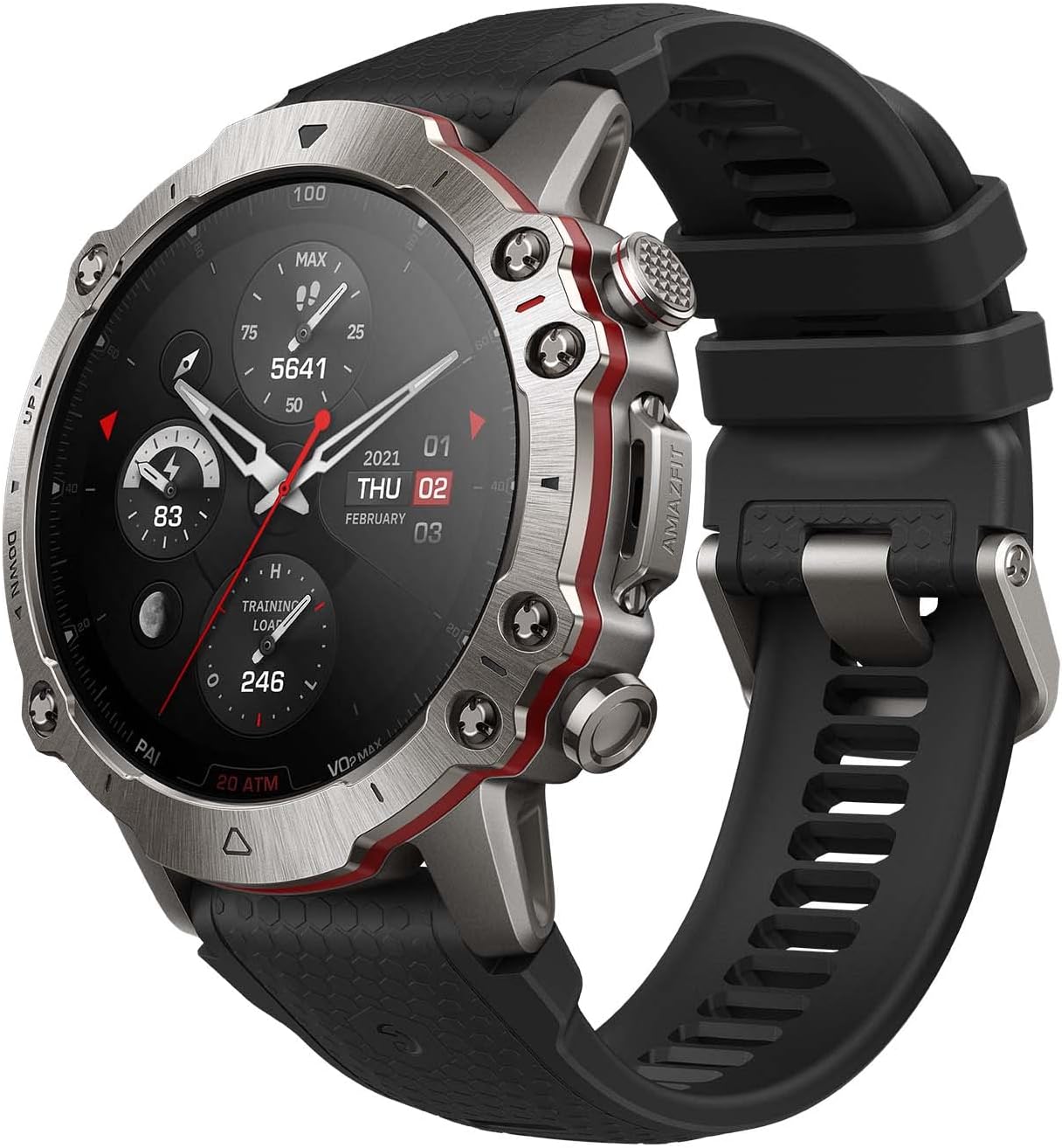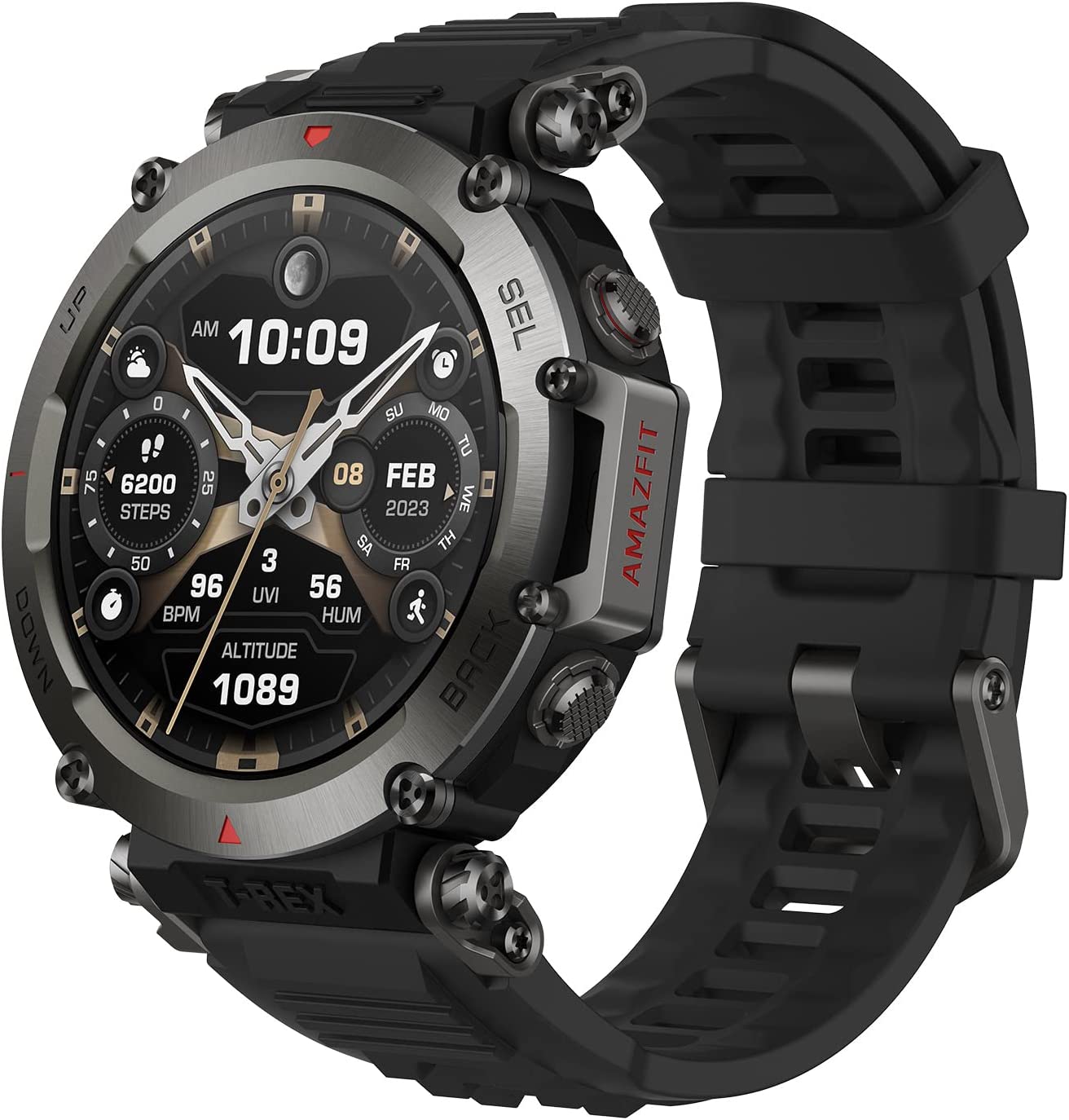There’s something undeniably appealing about a smartwatch that looks like it could survive an avalanche. And with the Amazfit T-Rex Ultra and Amazfit Falcon, we’re not just talking about big builds and chunky bezels—we’re talking full-blown survivalist tech with GPS precision, dive support, and enough sensors to make your phone jealous. But despite the similar pitch, these two watches take very different paths when it comes to usability, design, and priorities.
If you’ve been eyeing either of these and wondering which one actually delivers more, not just on paper but in real life—we’ve worn them, tested them, and we’ve got answers.
Build quality: weight vs material, and where comfort fits in
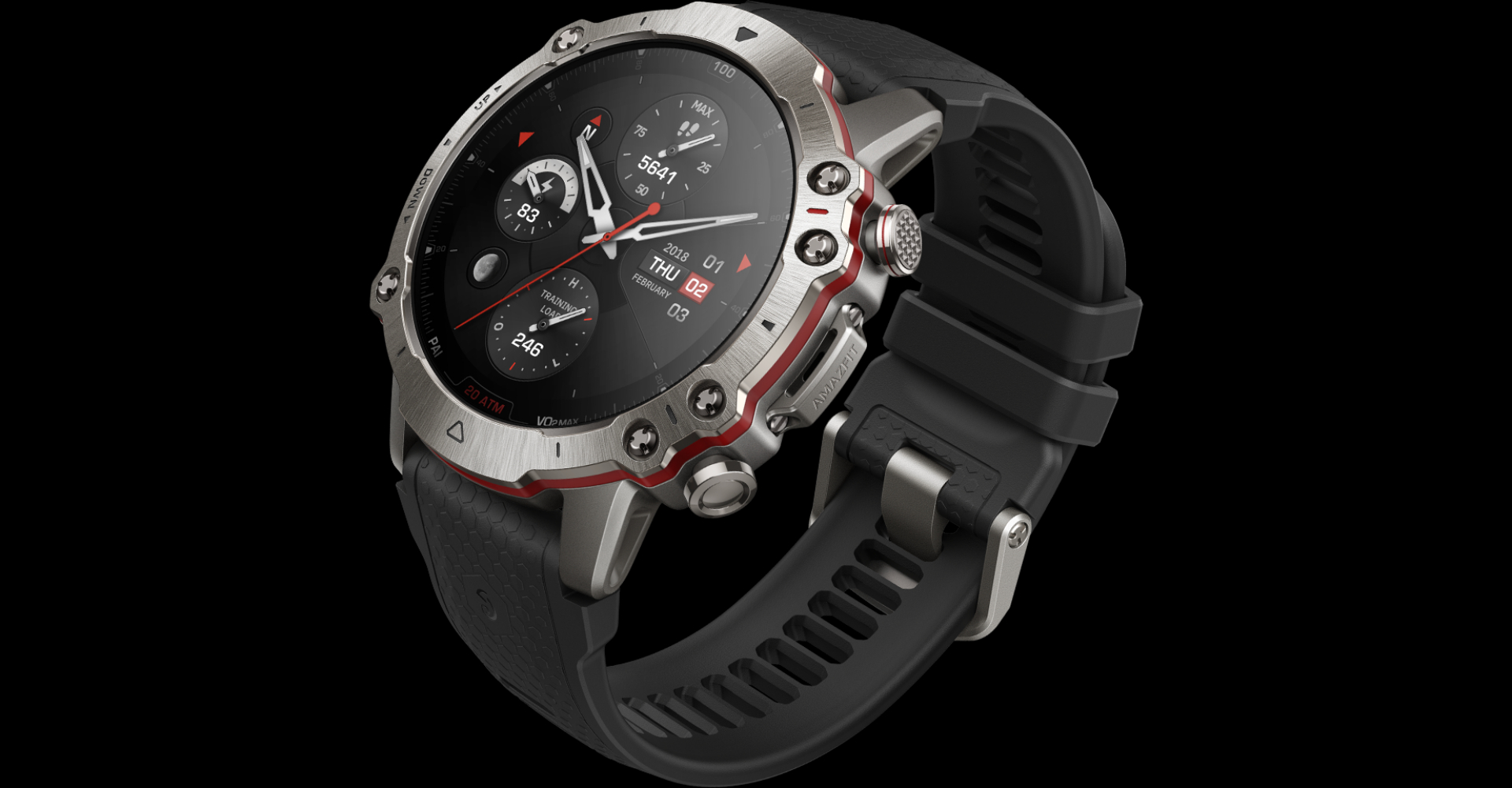
If you’re judging by first impressions, both of these watches scream durability. Huge bezels, industrial screws, and wide silicone straps give them that unmistakable “I’m going to climb something dangerous” look. But start wearing them, and you’ll feel the difference.
The T-Rex Ultra uses a stainless steel and polymer hybrid, which makes it a bit of a tank. It weighs 89 grams without straps, and yeah—you feel that on your wrist. The bonus? It has adjustable lugs, and honestly, that little tweak makes a big difference. Whether you’ve got thick wrists or narrow ones, it hugs better than its size suggests.
The Falcon counters with a full titanium unibody. That instantly gives it an edge in terms of finish—it feels premium, looks sleek, and is noticeably lighter. At just 64 grams, it’s surprisingly comfortable even for smaller wrists. But it lacks the adjustable lugs, so depending on your fit, it might shift more during high-motion activity.
Both meet MIL-STD-810G standards and handle temperature swings from -40 to 70 °C. If you’re planning on running across a frozen lake or hiking through desert heat, you’re covered.
Water resistance: dive mode or depth rating?
You’d think the one with 20 ATM water resistance would win here, right? That’s the Falcon. It’s technically certified for deeper submersion. But only the T-Rex Ultra has a dedicated dive mode—and that changes the game.
So, yes, the Falcon can go deeper. But the T-Rex Ultra actively tracks your dives, including metrics like depth and temperature. If you’re a swimmer or recreational diver looking for usable data—not just durability—that dive mode is gold.
Both will handle pools, rainstorms, and accidental dunkings. But only one was designed to do something underwater.
Display differences: screen size vs screen strength
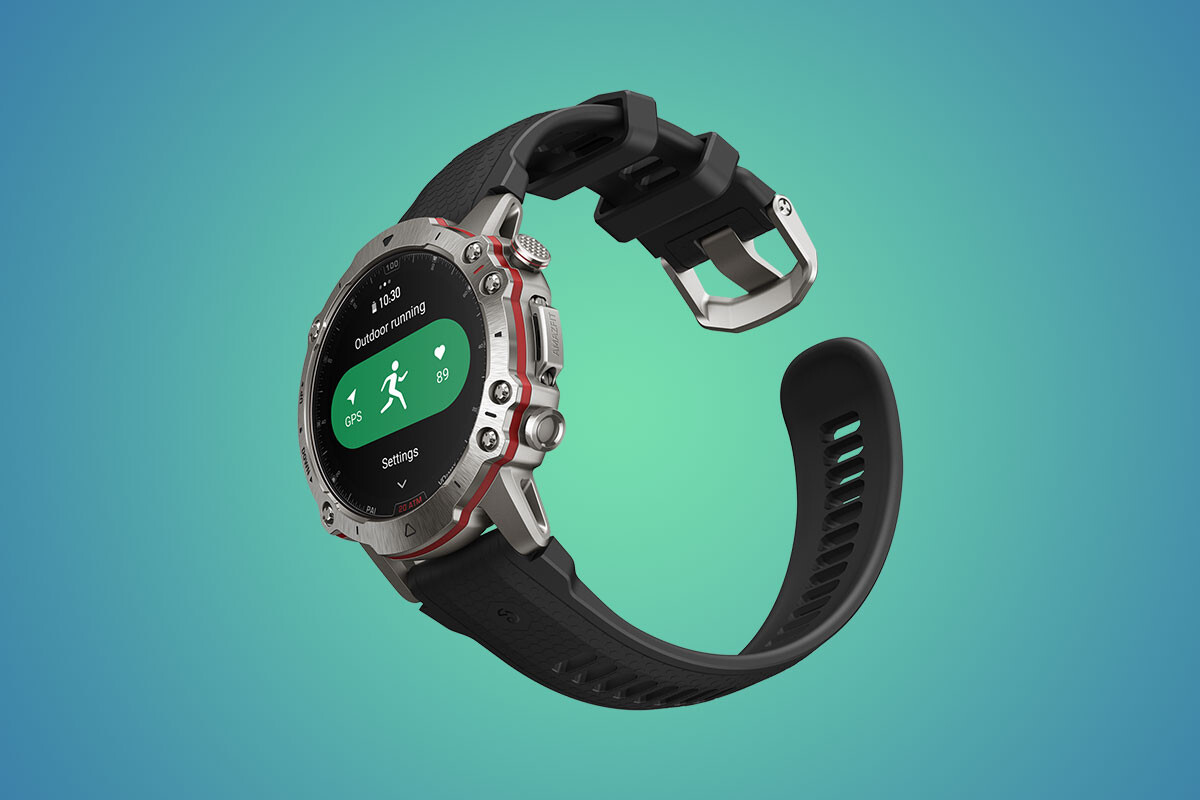
If you spend a lot of time outdoors—or you just like seeing your stats without squinting—the T-Rex Ultra’s 1.39″ AMOLED screen wins for visibility. More real estate means easier map reading, faster stat checking, and a smoother experience when scrolling through menus.
But then there’s the Falcon’s sapphire crystal display. Smaller at 1.28 inches, yes—but much more scratch-resistant. If you’re the type who drags your wrist along climbing walls or branches, that sapphire layer could be a lifesaver.
Both screens hit 1,000 nits of brightness and support always-on displays. So no matter what you pick, readability is excellent in full sun. It just comes down to what matters more: bigger or tougher?
Fitness and health features: the Ultra edges ahead
Both watches go big on health metrics. You’ll get 24/7 heart rate tracking, SpO₂ monitoring, stress analysis, and sleep reports. You can even set alert thresholds for when your vitals go outside the safe zone.
But when we looked at activity tracking, the T-Rex Ultra just squeezes out more value. It supports 162 sports modes versus the Falcon’s 159, and while that sounds trivial, the Ultra also includes a few niche categories the Falcon skips—useful for triathletes or anyone who mixes strength and outdoor workouts.
Both detect 25 strength exercises and 8 movement-based workouts automatically, which makes gym sessions more fluid. You don’t have to tap the watch between every set. It logs reps, adjusts form data, and even identifies transitions.
You can also pair external accessories—chest straps, cycling sensors, power meters—and sync everything with Strava, Apple Health, or Google Fit. You’re not locked into a single ecosystem, which makes either watch great for serious fitness tracking.
GPS and navigation: a dead heat—almost
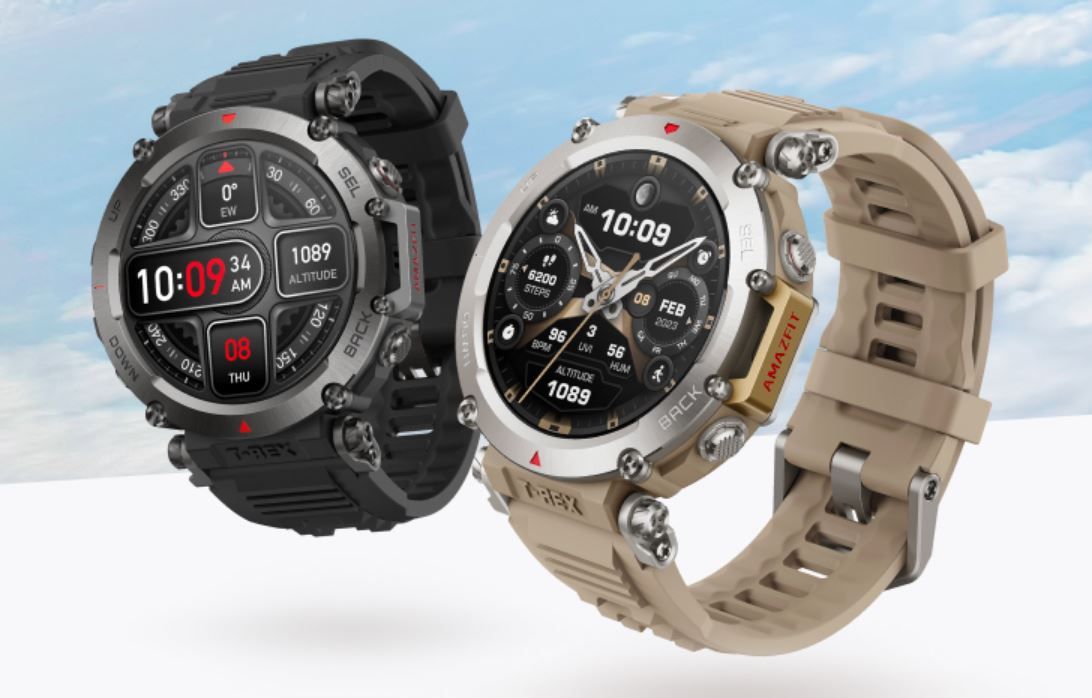
If you’re using your watch for exploring, this is the fun part. Both the T-Rex Ultra and the Falcon include dual-band GPS and support six satellite systems. That means fast signal locking, reliable positioning, and excellent accuracy even in dense cities or forests.
You get offline maps, real-time route tracking, and track-back guidance on both. Even without your phone, these watches will guide you home. Whether you’re trail running, hiking, or just exploring a new area, you won’t get lost unless you want to.
They both perform identically in this department, but here’s the twist: the larger display on the Ultra makes map navigation easier. Zooming, tracking, reading street names—it’s just more comfortable. Functionally they tie, but visually, the Ultra wins.
Battery life: stamina under pressure
This one surprised us. Both pack the same 500mAh battery, but the Ultra clearly makes better use of it.
In typical use, the T-Rex Ultra gets 20 days. The Falcon? About 14. And when GPS kicks in, the Ultra still gives you 28 hours, compared to 21 on the Falcon.
But the Ultra also does something extra: low-temp GPS mode. Designed for -30 °C environments, it keeps working while other watches would quit. So if you’re into skiing, mountaineering, or just live somewhere ridiculously cold, this feature alone makes the Ultra more dependable.
Charging speeds are about the same, and both use proprietary magnetic docks.
App, software, and everyday smarts
Both watches run on Zepp OS, and if you haven’t used it, here’s what you need to know: it’s lightweight, responsive, and customizable. You won’t get Wear OS-style app stores or animations, but you do get speed, reliability, and zero bloat.
Widgets are smooth, notifications come in reliably, and both watches let you control music, check the weather, set alarms, or even use a GoPro remote control.
Yes, you read that right—both models include GoPro support, which is a fun surprise for content creators or action sport fans.
They’re both compatible with Android and iOS, and connectivity is strong. Bluetooth is fast, Wi-Fi handles app updates, and you don’t need a constant phone tether for most features.
Music and storage: same game
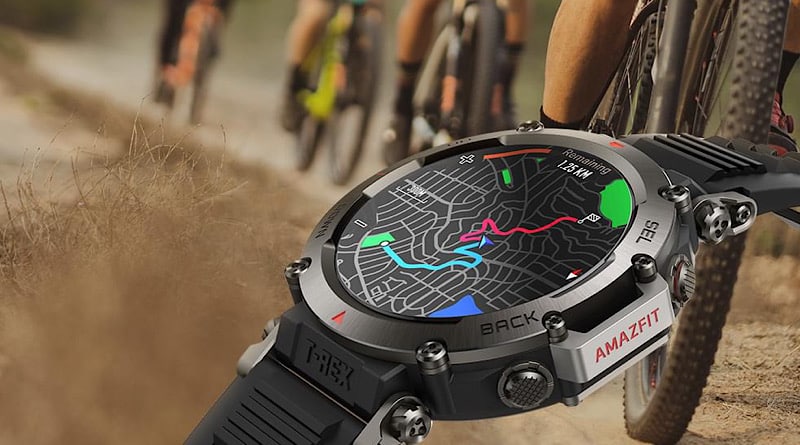
Both models offer 2.3GB of storage for offline music, and both let you connect Bluetooth earbuds for phone-free listening. No Spotify streaming, unfortunately, but if you plan ahead, you can easily load enough tracks for several workouts or hikes.
Music controls are intuitive, and sync speeds are decent. For users who hate carrying their phone while running, this is a real plus.
Final verdict: Amazfit T-Rex Ultra takes the win—with caveats
Let’s be real. The Falcon is a beautifully made watch. That titanium body, the sapphire crystal, the ultra-lightweight feel—it’s a joy to wear and a statement piece for anyone who loves refined durability. If you’re drawn to premium materials and want a rugged device that won’t scratch easily, it’s a fantastic choice.
But if we’re talking function over form? The T-Rex Ultra wins this round.
It gives you:
-
Longer battery life
-
A larger screen
-
More sport modes
-
A dive mode
-
Low-temperature GPS
-
Adjustable lugs for better fit
It’s built to work harder, go longer, and adapt better—whether you’re running trails, diving into a reef, or just tracking your morning lifts.
So yeah, the Falcon looks better on paper. But the T-Rex Ultra does more in real life. If you’re picking a rugged smartwatch to live with every day—not just to admire—that makes all the difference.

